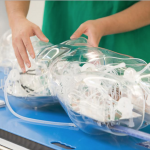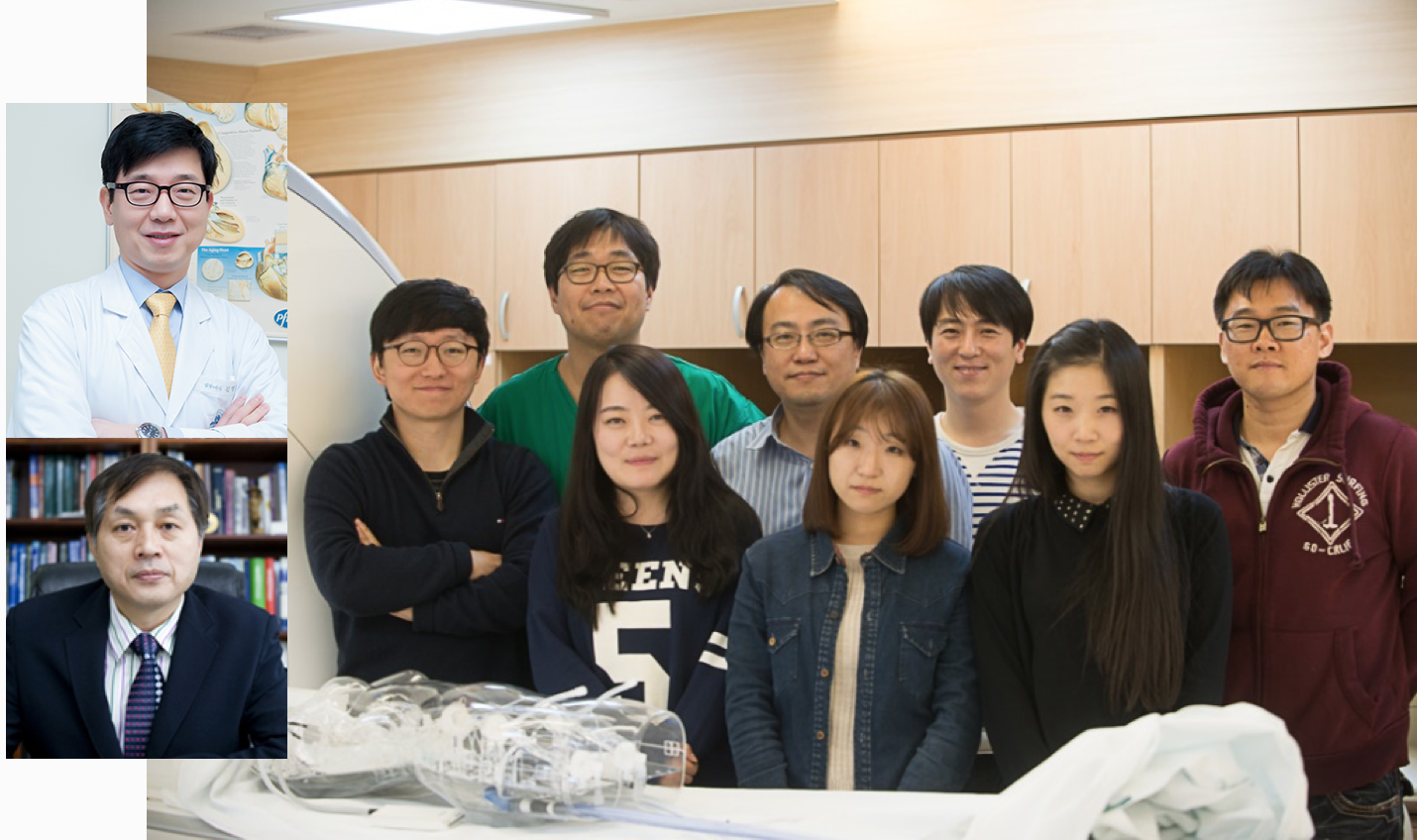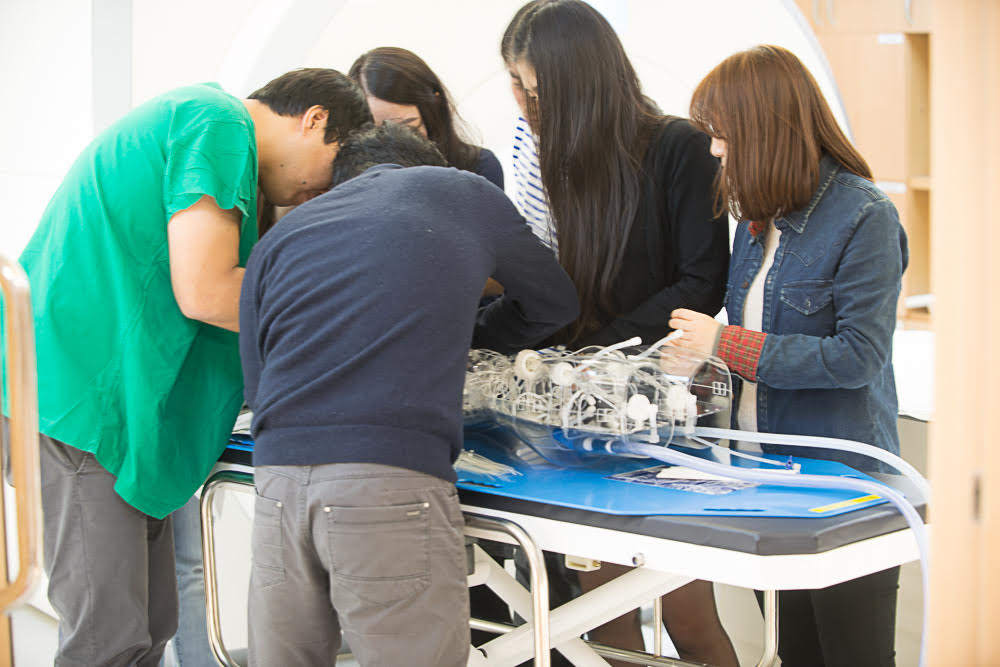
 BY MARIO MALAVÉ, SRI KOUNDINYAN, DAVID ZENG & NIKOLA STIKOV
BY MARIO MALAVÉ, SRI KOUNDINYAN, DAVID ZENG & NIKOLA STIKOV
Hojin Ha is currently a postdoctoral researcher at Linköping University in Sweden, working on developing 4D phase-contrast MRI (PC-MRI) techniques. His paper entitled “Multi-VENC Acquisition of Four-Dimensional Phase-Contrast MRI to Improve Precision of Velocity Field Measurement” was selected as an Editor’s pick for the month of May. The paper demonstrates a technique for improving the velocity signal of 4D PC-MRI, and the use of a 3D printed phantom for modeling the aortic valve. We caught up with Hojin to discuss his work and life in Sweden.
MRMH: Can you tell us a little bit about your background?
Hojin: I studied fluid dynamics during my graduate studies in Mechanical Engineering at Pohang University in Korea. At the end of my PhD, I was fascinated with 4D PC-MRI that can measure temporal variation of 3D velocity field noninvasively, so I worked with Dr. Sang Joon Lee and colleagues in Asan medical center (Korea).
MRMH: So this work started as an extracurricular activity?
Hojin: Yes, it was an extra paper for me, and it was the start of my career in the field of PC-MRI. And now I have moved to Sweden for a postdoc to continue working on 4D PC-MRI.
MRMH: Can you give a brief summary of your paper?
Hojin: When I compared the velocity field from 4D PC-MRI with the conventional velocimetry (i.e. particle image velocimetry), I realized that 4D PC-MRI showed good agreement with PIV for a high velocity flow region. However, it did not provide good results for low velocity flow regions such as recirculation flow in post-stenosis, mostly due to the lack of velocity-to-noise (VNR) ratio. Since then, we aimed to improve precision of 4D PC-MRI technique by using multiple Velocity ENCoding (VENC) for better analysis of flow structures.
The concept of the study is simple. Lower VENC usually resulted in better VNR, however, it may also result in phase aliasing. Therefore, the velocity field obtained for large VENC was combined with that from small VENC, unless velocity data were lost by phase aliasing or phase dispersion. We investigated noise levels of the combined velocity fields by increasing the overlapping number of VENC parameters, and the result showed that VNR at stenosis flow could be increased by two to six times.

The flow team. Insert: Young-Hak Kim (top), Sang-Joon Lee (bottom). Back row: (Left to right) Dong-Hyun Yang, Namkug Kim, Guk-Bae Kim, Hojin Ha. Front row: (Left to right) Ji-hoon Kweon, Eun-mi Yoon, Ji-hyun Ko, Dan-bi Song.
MRMH: What are some alternative methods for estimating velocity fields?
Hojin: In the clinic, we have echocardiography and 2D PC-MRI to measure velocity fields. It also has some disadvantages, such as not being able to obtain the whole 3D field of view. Various hemodynamic parameters, such as energy and pressure loss of blood flow and the workload of the heart represent the complex interaction of the flow velocity field and its spatial gradient, which only can be analyzed with 4D PC-MRI. 4D flow research will bring new diagnostic methods based on fluid-dynamics, and that is why 4D PC-MRI is important to us.
MRMH: What are the next steps for improving 4D flow and velocity estimation for MRI?
Hojin: First, the scan time needs to be reduced. When we use conventional Cartesian sequences for measuring cardiac flow it takes 30-40 minutes, which is too long for patients. Major vendors and many researchers are trying to reduce the scan time by using various acceleration techniques.
MRMH: What was the biggest challenge and practical consideration you had to deal with when conducting your project?
Hojin: Developing new reconstruction applications is relatively easy in phantoms, but to employ this in clinical routines is difficult. Demonstrating accuracy in patients was the most difficult part for us, and follow-up studies are needed to show the relationships, accuracy and performance of this kind of technique.
MRMH: Can you tell us about the phantom you used?
Hojin: The model was a canonical form of stenosis, which has been previously studied and models the aortic flow. If you want to investigate the effect of aortic valve types on the aortic flow, you can fabricate various patient-specific phantoms using a 3D printer and perform a test scan.

The phantom, known informally as “Eve”, is constructed to mimic a human’s circulatory system.
MRMH: What sequence were you using?
Hojin: We used a 4D-Flow product sequence from Siemens, with a second order correction to correct for background noise. The present study was just a proof of concept. When I went to ISMRM, I got a lot of questions about how to optimize the VENCs, so we are currently working on optimization for each scan and patient.
MRMH: Have you tried a different method for combining the data to improve the VNR, such as Kalman filtering?
Hojin: We haven’t considered Kalman filtering. We have been asked about Gaussian averaging, and we would like to look into that. When deploying this sequence for patients, I do believe that averaging techniques will be needed for higher VENCs to minimize motion artifacts. Currently, in the published paper the motion artifacts were not severe.
MRMH: What are you working on in Sweden?
Hojin: I work with Tino Ebbers and Peter Deverfeldt in Linkoping, Sweden, on 4D PC-MRI, developing a sequence and reconstruction methods to measure turbulence flow in the aorta and turbulence dissipation of energy in patients.
MRMH: How does Sweden compare to Korea in terms of everyday life and the research climate?
Hojin: One of the main differences between Korea and Sweden is the work schedule. They have different working hours and I have more free time for creative thinking.
Mario: Any parting thoughts to the readers?
Hojin: The groundbreaking work in my field, such as 4D flow developmental acceleration techniques, was published in MRM, so I was honored to present my work in the same journal and to participate in this interview.
